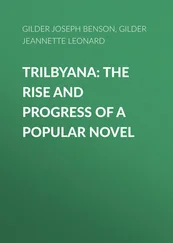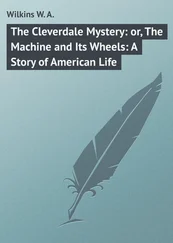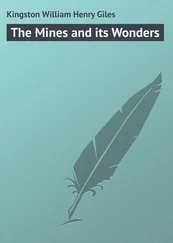Wilhelm Joseph von Wasielewski - The Violoncello and Its History
Здесь есть возможность читать онлайн «Wilhelm Joseph von Wasielewski - The Violoncello and Its History» — ознакомительный отрывок электронной книги совершенно бесплатно, а после прочтения отрывка купить полную версию. В некоторых случаях можно слушать аудио, скачать через торрент в формате fb2 и присутствует краткое содержание. Жанр: foreign_antique, foreign_home, music_dancing, на английском языке. Описание произведения, (предисловие) а так же отзывы посетителей доступны на портале библиотеки ЛибКат.
- Название:The Violoncello and Its History
- Автор:
- Жанр:
- Год:неизвестен
- ISBN:нет данных
- Рейтинг книги:3 / 5. Голосов: 1
-
Избранное:Добавить в избранное
- Отзывы:
-
Ваша оценка:
- 60
- 1
- 2
- 3
- 4
- 5
The Violoncello and Its History: краткое содержание, описание и аннотация
Предлагаем к чтению аннотацию, описание, краткое содержание или предисловие (зависит от того, что написал сам автор книги «The Violoncello and Its History»). Если вы не нашли необходимую информацию о книге — напишите в комментариях, мы постараемся отыскать её.
The Violoncello and Its History — читать онлайн ознакомительный отрывок
Ниже представлен текст книги, разбитый по страницам. Система сохранения места последней прочитанной страницы, позволяет с удобством читать онлайн бесплатно книгу «The Violoncello and Its History», без необходимости каждый раз заново искать на чём Вы остановились. Поставьте закладку, и сможете в любой момент перейти на страницу, на которой закончили чтение.
Интервал:
Закладка:
After Kerlino there appeared in North Italy as noted lute and viola makers the monk Pietro Dardelli, in Mantua about 1500; Gaspard Duiffopruggar, in Bologna, 1510; Venturi Linarolli (Linelli), in Venice, 1520; Peregrino Zanetto, in Brescia in 1530; and Morglato Morella, in Venice, 1550. Amongst these G. Duiffopruggar is evidently of German birth, 9 9 The name Duiffopruggar doubtless came from the same source as the surname Tieffenbrucker, still existing in South Germany.
and remarkable as having, as far as we can see, made the first violins.
This artist was in 1515 summoned to France by King Francis I.; he at first lived in Paris and then at Lyons. He made some excellent Bass viols (Gambas), of which two fine specimens are extant in France. A similar bass viol was represented by Raphael in his painting of St. Cecilia. This splendid picture, in the Pinacothek at Bologna, existed in 1515.
After Duiffopruggar, Andreas Amati (1520 to about 1580), the founder of the Cremona school, distinguished himself in the making of violas (as well as violins). His instruments obtained such a great reputation that Charles IX. of France, an enthusiastic amateur of music, had twenty-four violins, six tenors, and eight basses made by him. Amongst the latter there were several bass viols, like the viola da gamba. The instruments made for Charles IX. by Andrea Amati were every one of them destroyed during the French Revolution of 1792. 10 10 Mr. Heron Allen in his “Violin Making, &c.,” page 74, says that two were recovered.—( Tr. )
Contemporaneously with Andreas Amati the manufacture of stringed instruments was vigorously carried on by Gaspard da Salò, in Brescia.
In Germany, from the second half of the sixteenth century, Lauxmin Possen, in 1550, at Schongau, subsequently instrument maker for the Hofkapelle at Munich; Joh. Kohl, who at the same time worked at Munich and in 1599 was appointed Court instrument maker there, and also Joachim Tielke were successively celebrated. The latter lived, as Gerber informs us, at Hamburg from about 1660 to 1730, and even made lutes of real ivory and ebony, the necks of which were inlaid with gold and silver and mother-of-pearl, but one especially with nine pegs of the most beautiful tortoiseshell. Tielke, however, made also violins and excellent gambas. One of these, a costly instrument which was formerly in the possession of the Elector Joh. Wilhelm of the Palatinate, 11 11 The same Prince to whom Corelli dedicated his “Concerti Grossi,” published in 1712.
was brought from Mannheim to the Duke of Maxburg’s Museum at Munich, and thence into the Royal Bavarian National Museum, where it is preserved as a treasure of rare value. The peg-box, the fingerboard, the tail-piece, the sides, and the back are all decorated with designs of flowers, foliage, and tendrils, as well as symbolical and allegorical representations taken from mythology, the subjects representing for the most part love and music. These decorations and designs are inlaid work in tortoiseshell, ivory, ebony, mother-of-pearl and silver. 12 12 Herr Obernetter, of Munich, has taken two beautiful photographs of this richly decorated instrument, which reproduce with great accuracy all its peculiarities. As far as I know they can still be purchased.
Another valuable specimen of a gamba made by Tielke in the year 1701, which belonged to the famous cello virtuoso, F. Servais, has been described and represented by A. J. Hipkins, of Edinburgh, in his lately published work, “Musical Instruments: Historic, Rare and Unique.” 13 13 Here may be mentioned also a third magnificent gamba, that of Vincenzo Ruger, said to have been made in Cremona in 1702. It is distinguished not only for its beautiful exterior in every respect, but also by an extraordinarily sonorous and unusually fine quality of tone, which combines the resonant character of the gamba with that of the violoncello. The latter circumstance is attributed to the fact that the back, which is usually flat in the ordinary gamba, is arched in this one. This instrument, which has been lately purchased by the Prussian Government for the Berlin Museum, was formerly in the possession of Herr Paul de Wit, in Leipsic. The account of instrument making published by him contains (Vol. VI., No. 21) a description and illustration of the gamba in question.
During the second half of the sixteenth century there must have been a considerable multiplication of the different kinds of violas then in use, and especially of the bass viol, for Michael Prätorius mentions in his “Syntagma musicum,” which appeared in 1614-1620, the following examples:
1. Very large Bass Viol with four strings (corresponding to the modern Contrabasso).
2. Great Bass Viol de Gamba in three different tunings, with five and also six strings (also like the Contrabasso).
3. Small Bass Viol de Gamba, five different examples with six, four, and three strings (answering in tone, in some measure, to the modern Violoncello).
4. Tenor and Alto Viol de Gamba, in two different pitches, with six, five, four, and three strings (answering partly to the Violoncello and partly to the modern Tenor).
5. Cant Viol de Gamba (Violetta piccola), four different kinds with six, five, four, and three strings (the tone also partly answering to the Tenor and partly to the Violin).
6. Viol Bastarda, in five different pitches, with six strings (the tone corresponding to that of the Cello).
7. Viola de Braccio, four different examples, with five and four strings (corresponding in tone partly to the Violoncello and partly to that of the Tenor).
Moreover, Prätorius mentions, under the heading “Viole de Braccio Viols,” the “Discant Viol” (our modern Violin), the small “Discant Viol” (tuned a fourth higher than our Violin), and two “very small Viols with three strings,” of which the lowest string of the first is a ninth and of the second an octave higher than the G String of the Violin.
Of the multitude of these different kinds of Viols then in use, which later on by manifold improvements were gradually reduced to a smaller number, until they resulted in the modern Violin and Tenor, as well as the Violoncello and Contrabasso, we must keep in view, for the object of the present work, the “Viola da Gamba” only, which must be regarded as the precursor of the violoncello. Prätorius gives a sketch (annexed) of the so-named instrument.
A comparison of these gambas with the sketches of viols by Judenkünig and Gerle shows what substantial alterations the stringed instrument in question underwent in the course of the second half of the sixteenth century. The neck had assumed a more modern and more convenient form for the technique of the left hand and the sounding-board had acquired more elegant and attractive outlines. At the same time the sound-holes, corresponding to the curves of the belly, were turned round and placed in a position more agreeable to the eye.
Prätorius expresses himself regarding the Viola da Gamba as follows: “Violas, viols, and violuntzes 14 14 Violuntzes is synonymous with the old French instrument, violonsse. Vide Grimm’s Dictionary of the German Language.
are of two kinds—1. Viole de gamba; 2. Viole de braccio (or de brazzio)—and the former is so called from having been held between the legs; for gamba is an Italian word and means a leg; le gambe, the legs. And since they have much larger bodies and, on account of the length of the neck, have strings of a much longer tension, they produce a mellower resonance than others, ‘di braccio,’ which are held on the arm. The two kinds are distinguished by town musicians: the viole de gamba by the name of violas: the viole ‘di braccio’ (among which Prätorius includes violins) by the name of fiddles or pollish fiddles....
Интервал:
Закладка:
Похожие книги на «The Violoncello and Its History»
Представляем Вашему вниманию похожие книги на «The Violoncello and Its History» списком для выбора. Мы отобрали схожую по названию и смыслу литературу в надежде предоставить читателям больше вариантов отыскать новые, интересные, ещё непрочитанные произведения.
Обсуждение, отзывы о книге «The Violoncello and Its History» и просто собственные мнения читателей. Оставьте ваши комментарии, напишите, что Вы думаете о произведении, его смысле или главных героях. Укажите что конкретно понравилось, а что нет, и почему Вы так считаете.












![Edward Ellis - Adrift on the Pacific - A Boys [sic] Story of the Sea and its Perils](/books/753342/edward-ellis-adrift-on-the-pacific-a-boys-sic-s-thumb.webp)